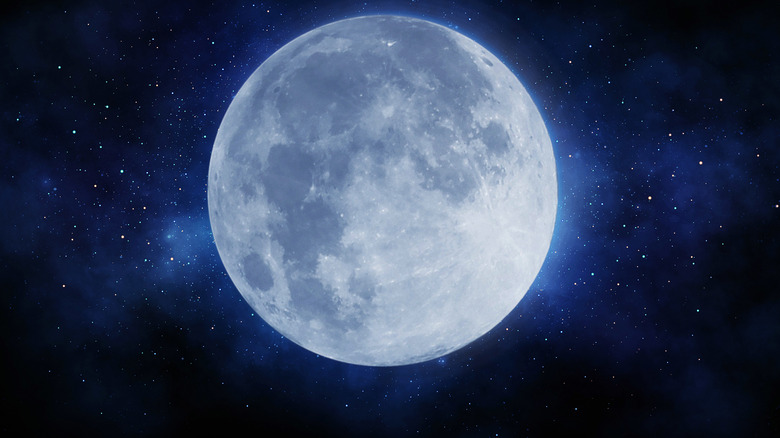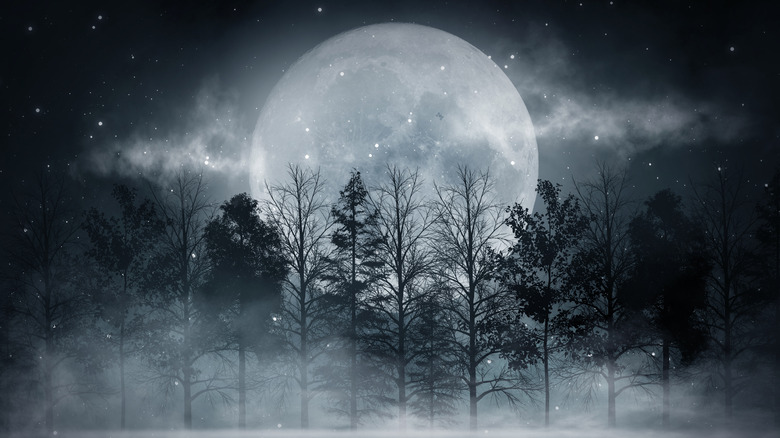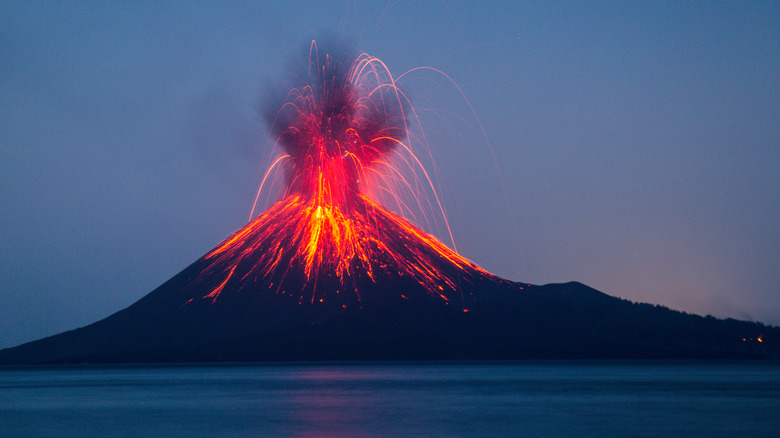How Rare Are Blue Moons?
The common saying "once in a blue moon" refers to something that occurs infrequently (via Nasa's Space Place). According to the Space website, this phrase has been around for over 400 years. Although it was first used to describe something as ludicrous or illogical, it later came to represent something that would never happen — similar to saying "when pigs fly."
Astronomically speaking, what exactly is a blue moon? Insider writes that it denotes a second full moon that occurs in one month. However, this definition has changed over the years.
As The Guardian explains, a blue moon used to refer to the third full moon out of four that occurred in one season. In 1946, an inexperienced astronomer, James High Pruett, used the term incorrectly for an article in "Sky & Telescope" (via Smithsonian Magazine). Needless to say, the error took off, as it is now the definition that is currently used.
Blue moons are not actually blue in color. Prevention reports that this is simply an illusion that can be caused by smoke and dust. As the moon cannot create its own light, it will forever be gray.
There will be no blue moons in 2022
According to The Guardian, blue moons are few and far between. They can occur every two to three years and are considered to be a rare phenomenon. The Royal Museums Greenwich writes that the last blue moon was on August 22, 2021. The one before that had been on Halloween 2020, the first in 19 years. Per the Almanac, the next blue moon is expected on August 30, 2023. Sadly, 2022 is a year without any blue moons.
As Insider explains, a full moon typically occurs once a month. However, a second one can occur because of a lapse between calendar months and lunar months.
Prevention reports that blue moons occur as a result of the way humans have arranged time. The Gregorian calendar, which is commonly used today, is based on the sun, not the moon. A majority of the time, the seasons align with the lunar cycle, but sometimes, they don't. Other cultures have stayed away from sun-based calendars for this reason. Simply put, blue moons are merely a result of the Gregorian calendar and are not special otherwise.
Volcanic explosions can cause blue moons
As explained by Space, moons can't actually turn blue. However, they can appear to be that color in any lunar phase under certain circumstances (via Prevention). According to the Natural History Museum, the deadly 1883 explosion of the Krakatau volcano in Indonesia caused the moon to appear blue at night. This was due to sulfur, ash, and other particles that were being reflected off the sun. Although this is a very rare occurrence, it has happened throughout the years — for instance, after the 1983 explosion of El Chichon in Mexico, and Mt. St. Helens in 1980 (per NASA).
In some cases, a fire can also cause the moon to appear a bluish tint. Nonetheless, the force of the fire and explosion determines if other people in other parts of the world will experience the phenomenon. Of course, blue moons are not the only type of rare moons. Space Place writes that there are also supermoons, blood moons, and harvest moons. Per Newsweek, strawberry moons also exist.


